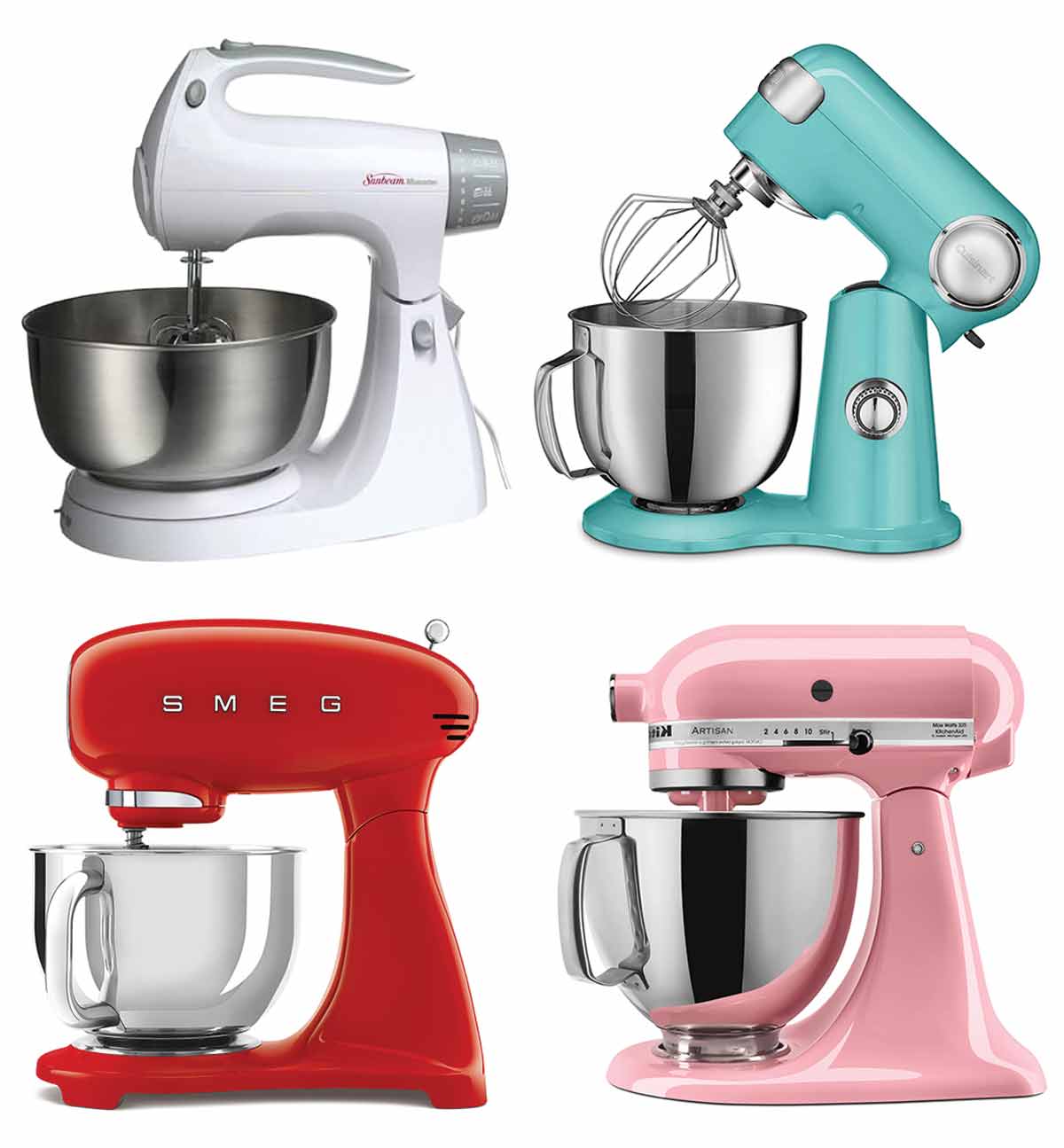
If you’ve ever been invited to a wedding, you’re at least passingly familiar with the classic KitchenAid stand mixer. KitchenAid was first introduced in 1917 with the sole purpose of producing stand mixers for the Navy, although its iconic stand mixer has topped wedding registries across the world for decades. With an incredible array of colors and sizes, it’s easy to understand why. But is it worth the hype?
We compared the five best-selling brands of stand mixers on the market to determine if KitchenAid truly is the best option for home cooks, keeping in mind experienced puff pastry bakers as well as occasional brownie makers. Our testing method was simple—do a little research and borrow a mixer from friends who own and love each of the top-selling brands, and then make the same bread dough in each. The mixers are rated, based on the brand’s overall performance rather than that of a particular model, on a scale from 1 to 5 that takes into consideration price, design, ease of use, and overall ability.
KitchenAid (Best Overall)
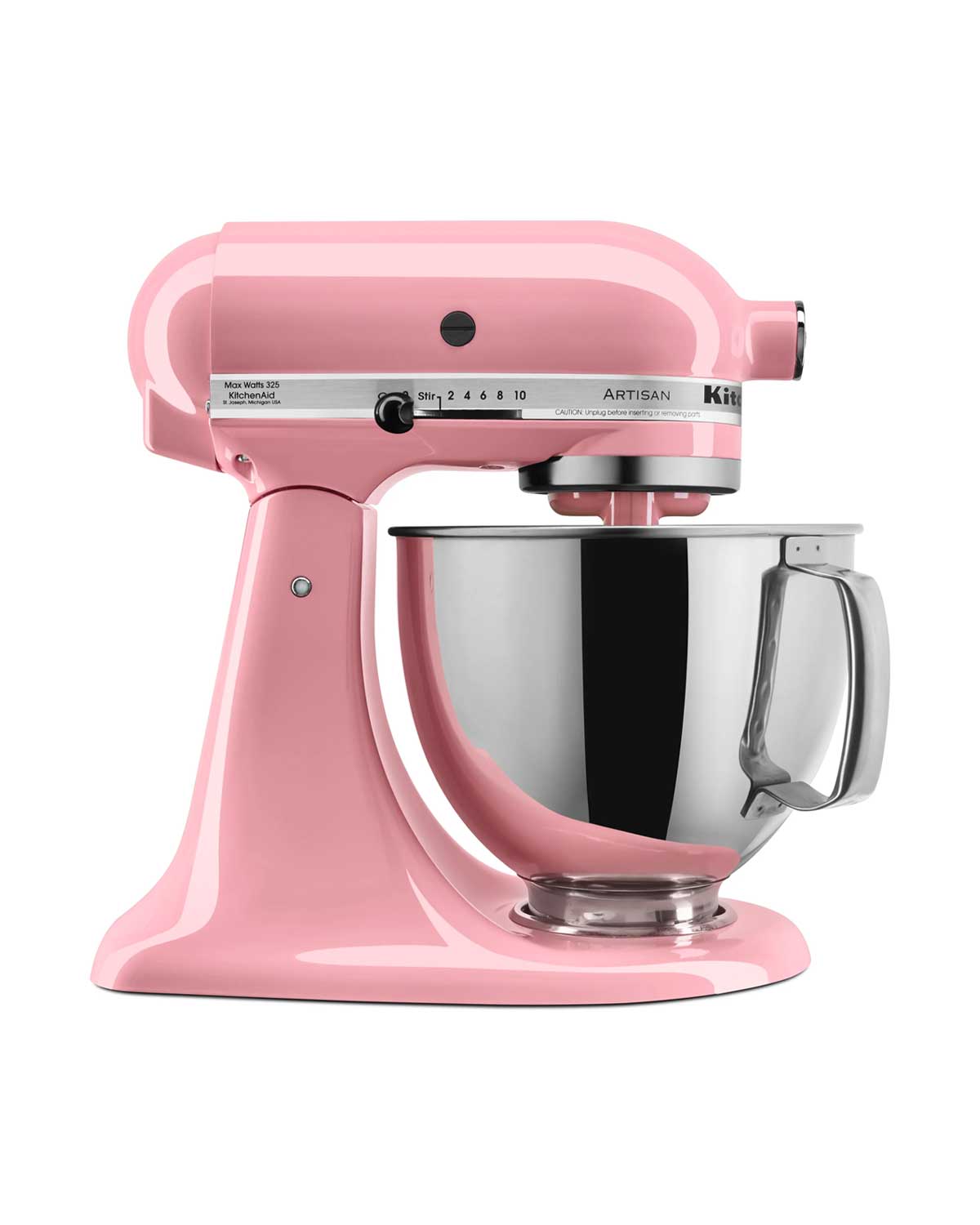
The platonic ideal of at-home kitchen equipment, the KitchenAid is an incredibly powerful tool that can do nearly anything with the right attachment. It could probably house-train your dog if you bought the correct pieces. As a company, KitchenAid has been in the at-home mixer game for more than 100 years and that shows in the obvious care taken in both design and capacity.
Pro: The options! Available in sizes ranging from 3.5 to 8 quarts; 4 different types of mixers to choose from, including Tilt-Head and Bowl-Lift; 50 different colors; and an absolutely mind-blowing array of bowls, beaters, and attachments.
Con: Rarely on sale, KitchenAid can be quite pricey. If you aren’t using a stand mixer regularly, it’s a lot to spend. Additionally, you’ll need to dedicate some permanent counter space to it as it’s quite heavy. Only some models are dishwasher safe and the others you have to hand wash and dry immediately.
Best Use: Anything. Especially capable with sturdy bread doughs (yes, that includes pizza and pretzel rolls).
Price: $269 to $899
Rating: 5. You really can’t go wrong here. It’s the much ballyhooed gold standard for a reason.
Sunbeam (Best for Beginners)
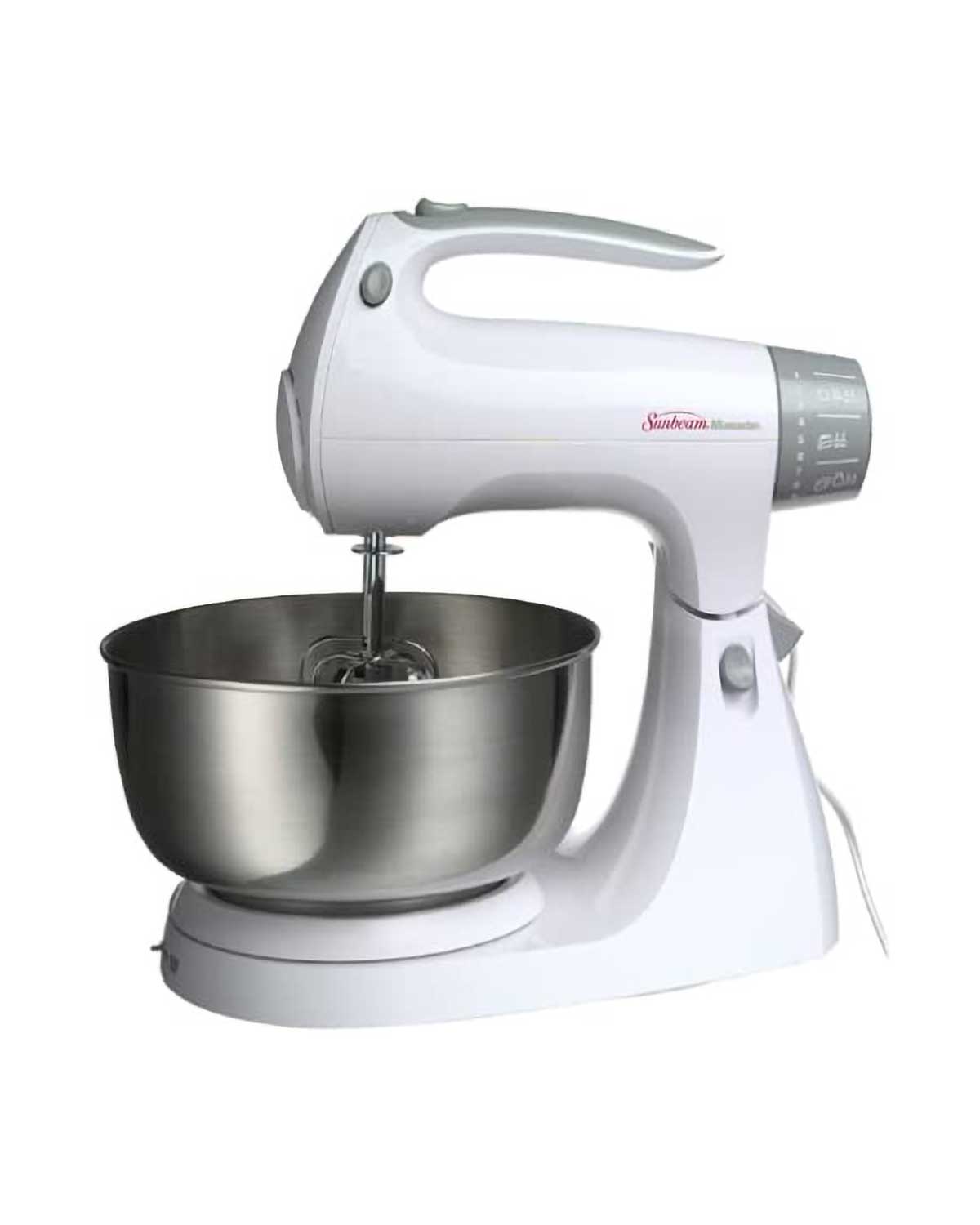
Powerful and affordable, the Sunbeam Mixmaster was the first mixer to have two detachable beaters and attachments you could buy separately. It was such an achievement that from 1930 through the late 1950s, it actually outsold the KitchenAid! In the years since, it’s continued to be a versatile tool due in large part to its powerful motor.
Pro: The price point is perfect for a beginning cook looking for a decent mixer. The small size makes it easy to store and the completely removable head makes cleanup that much simpler.
Con: Fairly limited capacity for bells and whistles. And frankly, it’s just not that cute.
Best Use: Lightweight batters, such as cookies, cakes, and brownies.
Price: $67 to $189
Rating: 3.5. It’ll get the job done, but it’s nothing to write home about.
Cuisinart (Best Value)

A favorite of James Beard in his later years, Cuisinart was so good at what they did that the brand became synonymous with “kitchen gadget.” While the company made its name in food processors, the stand mixer was an early pioneer in the field of accessibility. By creating larger and more sensitive knobs and buttons, Cuisinart allowed those with limited mobility in their arms and hands to use the machines successfully, as well as designing larger fonts for those with vision problems. This mixer is exactly what you might expect from them: precise, thoughtful, and very strong.
Pro: With a decent offering of colors, sizes, and attachments, the Cuisinart can do nearly everything the KitchenAid can do for $100 less and with less noise racket.
Con: You’ll need to scrape the sides of the bowl with a spatula to catch ingredients missed by the beaters, and though it’s nearly 10 pounds lighter than a KitchenAid, it’s still big and hard to clean due to only the bowl and some attachments being dishwasher safe.
Best Use: Heavy, wet doughs such as ciabatta and big batches of anything.
Price: $199 to $249
Rating: 4.5. It has its drawbacks, but this is a solid choice for anyone who doesn’t need to have a KitchenAid.
Hamilton Beach
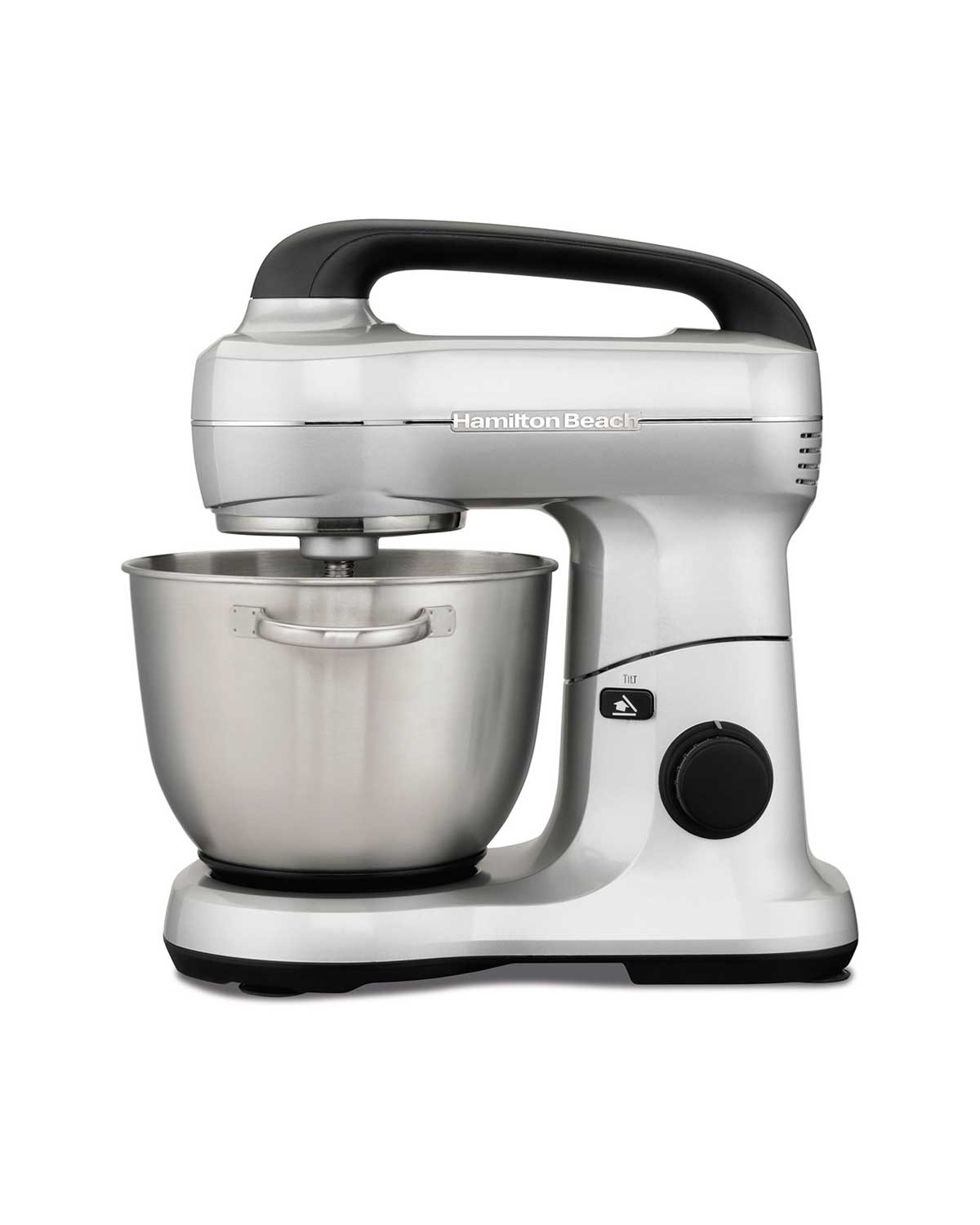
Named for the first engineer and the first marketing manager of the company (and not the city of origin, as we’d been assuming all these years) Hamilton Beach was founded in 1910 and makes everything from air purifiers to slow cookers. Their stand mixer, the most reasonably priced on this list, is tailor-made for people who only intend to use it once or twice a year.
Pro: Completely dishwasher safe and very affordable.
Con: The small and lightweight body is great in theory, but makes the mixer very unstable while in actual use, causing the body to shake and ingredients to spill out. It’s also very boxy looking and has fewer attachments and color options, so keeping it on your countertop for display isn’t really an option.
Best Use: Lighter demands, such as beating egg whites for Swiss meringue or emulsifying oil for homemade mayonnaise.
Price: $44 to $97
Rating: 2.5. You get what you pay for here.
Smeg
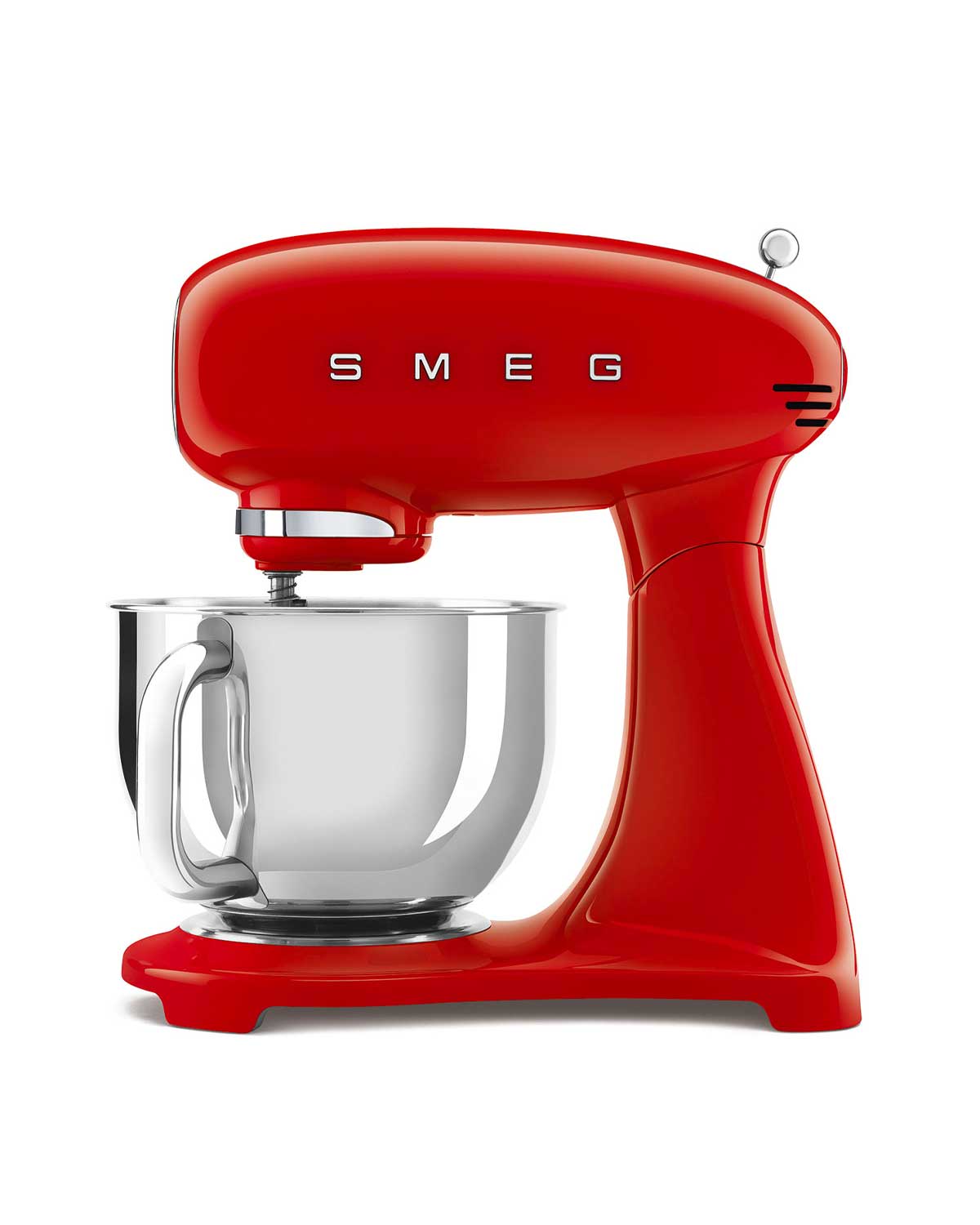
Unfortunately named and beautifully made, Smeg is a family-owned Italian kitchen appliance brand that specializes in retro designs with cutting-edge technology. Their classic tilt-head mixer stands out for its aesthetic sensibility, but don’t let that distract you from the overall quality and craftsmanship of the machine itself. The incredibly powerful motor and “smooth start” setting allows for heavy-duty use with no fear of splatter, and adding/removing attachments is quick and easy. (Full disclosure: This writer has a Smeg gas range in my apartment and it’s the only thing I would try to carry out on my own back if there were a fire.)
Pro: With a 600-watt motor, it’s twice the power of the next most powerful option on our list. Additionally, it really cannot be overstated how beautifully made this thing is; it runs smoothly and powerfully, does its job very well, and looks great on a counter.
Con: Besides being unreasonably expensive, the Smeg mixer doesn’t offer as many fun attachments as other brands.
Best Use: Anything from the densest doughs to whipped egg whites. And it’s the best option on our list for mixing pasta dough.
Price: $489 to $1500
Rating: 4.5. It’s an incredible mixer, although for the price, you have to really be in love with it.
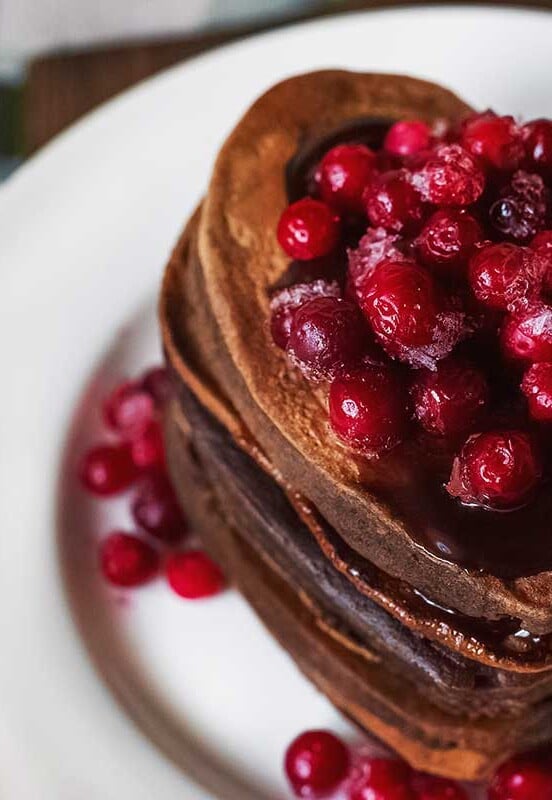
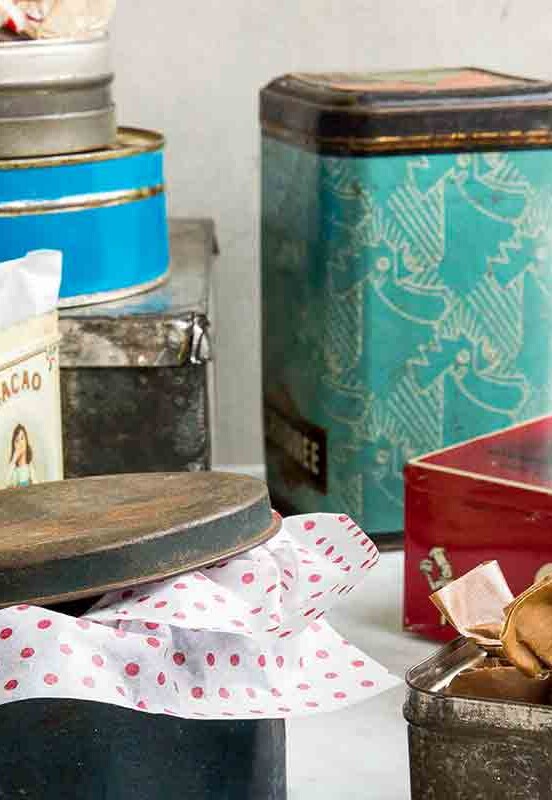










Any comment on a Bosch mixer? My pre-85 KitchenAid is starting to lose steam and I’m looking to replace it. In doing some research, there are a lot of favorable reviews of the Bosch.
We didn’t research the Bosch, Bill, but they are generally known for very good quality products. Do let us know what you choose in the end.
My KitchenAid is also more than 20 years old. They are pricey but last forever. Worth every penny.
Thanks, Susan! I completely agree with you.
I used my beloved KitchenAid, sometimes daily, for twenty years and have passed it along to my son, who now uses it several times a year. The only trouble I ever had was I once broke the dough hook that came with mine (after some fifteen years of near-constant use). I now have an Ankarsrum–a gift from my magical children–and it’s spendy, but if you’re a bread baker like me I recommend it without reservation. Even the Hobart mixers I used when I worked in commercial bakeries didn’t quite do the job this one does.
Thanks, Anne. That’s great to know. Appreciate you sharing your experience with us.